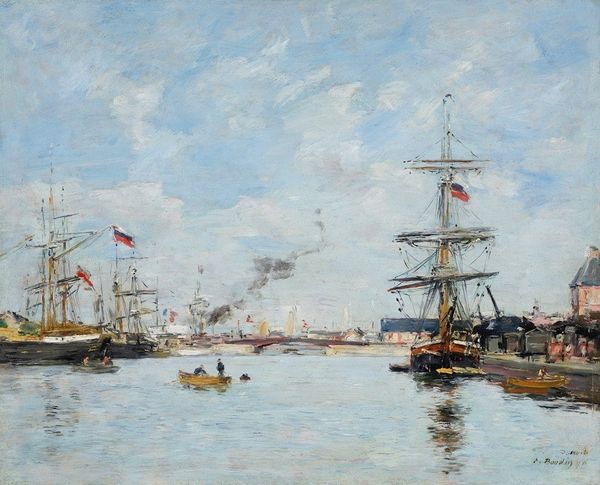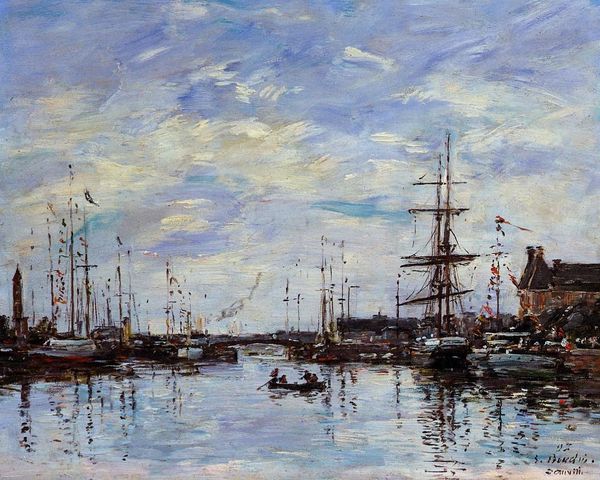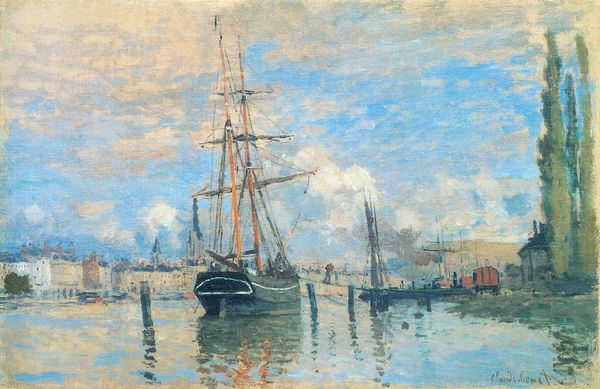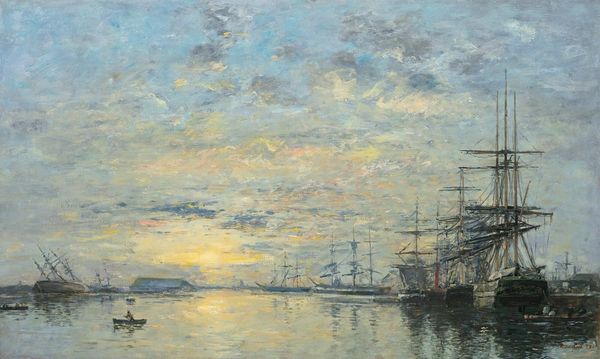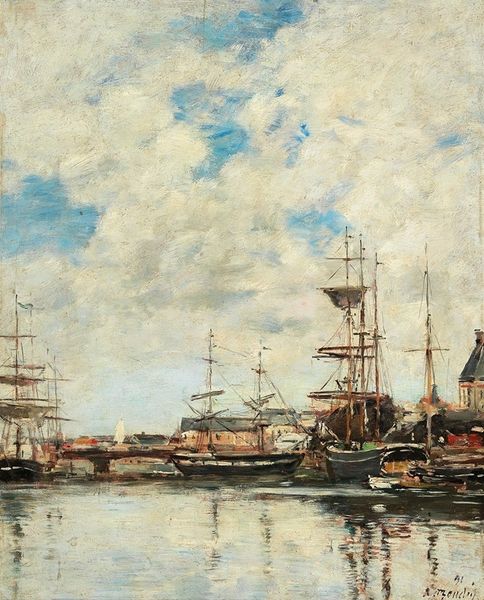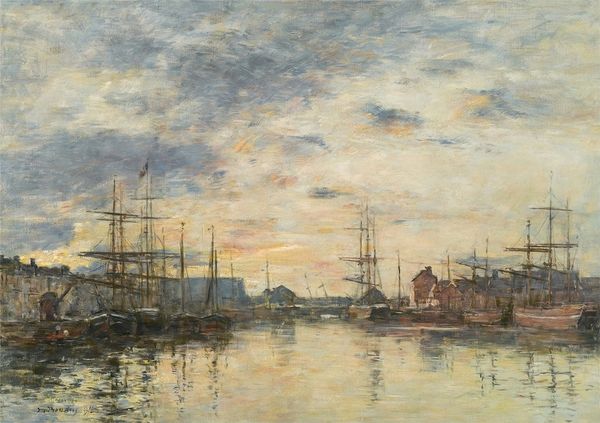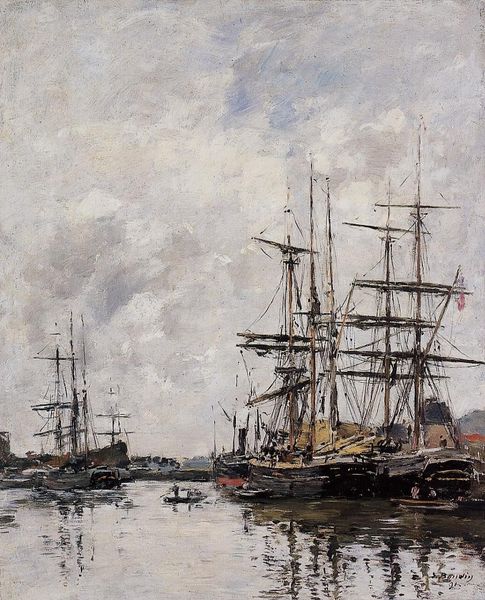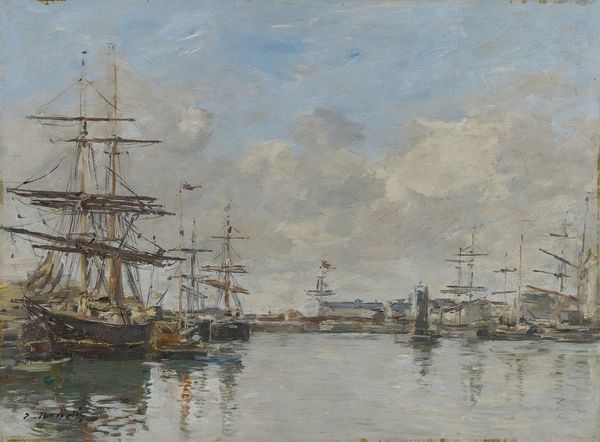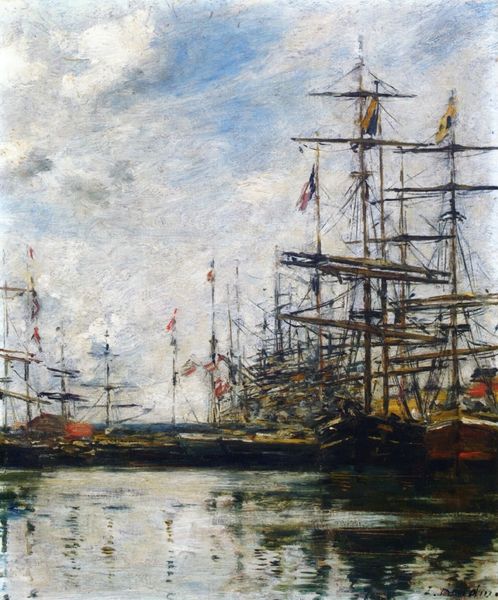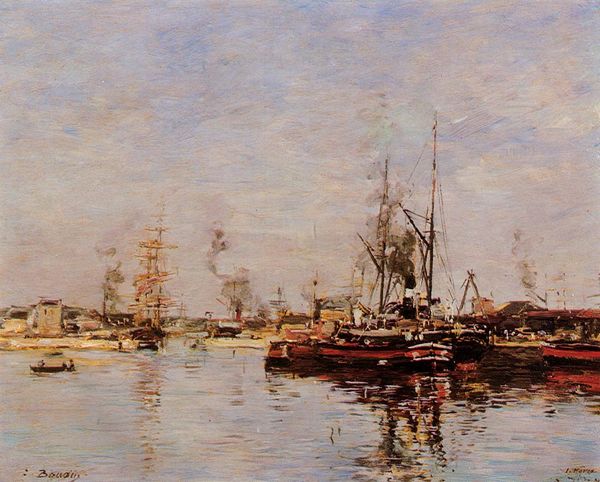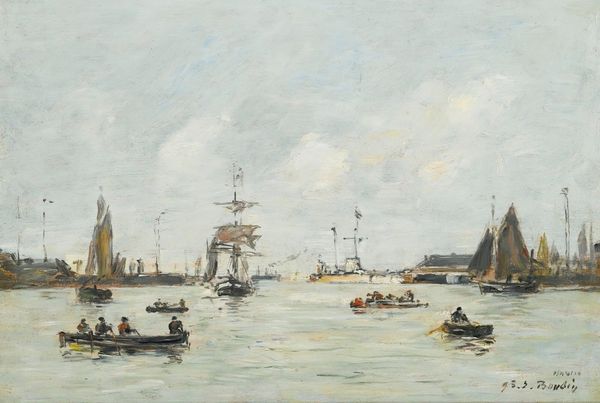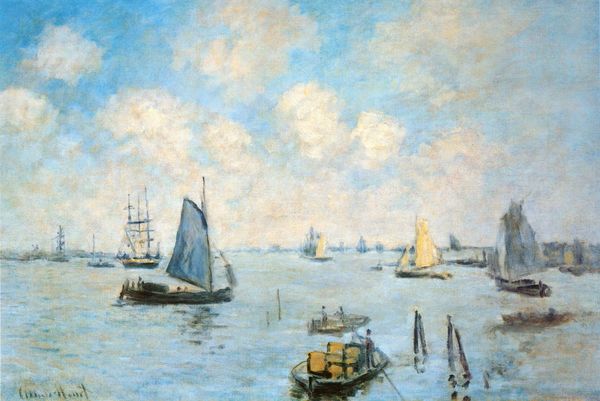
painting, oil-paint
#
boat
#
still-life-photography
#
ship
#
painting
#
impressionism
#
impressionist painting style
#
oil-paint
#
vehicle
#
landscape
#
impressionist landscape
#
oil painting
#
water
#
line
#
cityscape
Copyright: Public domain
Claude Monet likely painted this scene of the Amsterdam port with oil on canvas, using loose brushstrokes to capture the light and atmosphere. His technique, characteristic of Impressionism, involved applying paint in short, broken strokes, and building up layers of color, very different from the smooth surfaces of academic painting. Look closely, and you'll notice how the texture of the canvas is visible beneath the paint, adding to the sense of immediacy and spontaneity. But let’s also consider what is represented: ships. These vessels were the engines of global capitalism at the time, carrying goods and people across vast distances. Monet wasn't just painting a pretty picture; he was capturing a pivotal moment in the history of trade and labor, when goods were becoming increasingly accessible to new markets. The quick, gestural quality of the painting mirrors the rapid pace of industrial and economic change. Ultimately, the meaning of this artwork lies not just in its subject matter, but also in the materials and techniques used to create it, and in the wider social and economic context in which it was made.
Comments
No comments
Be the first to comment and join the conversation on the ultimate creative platform.
